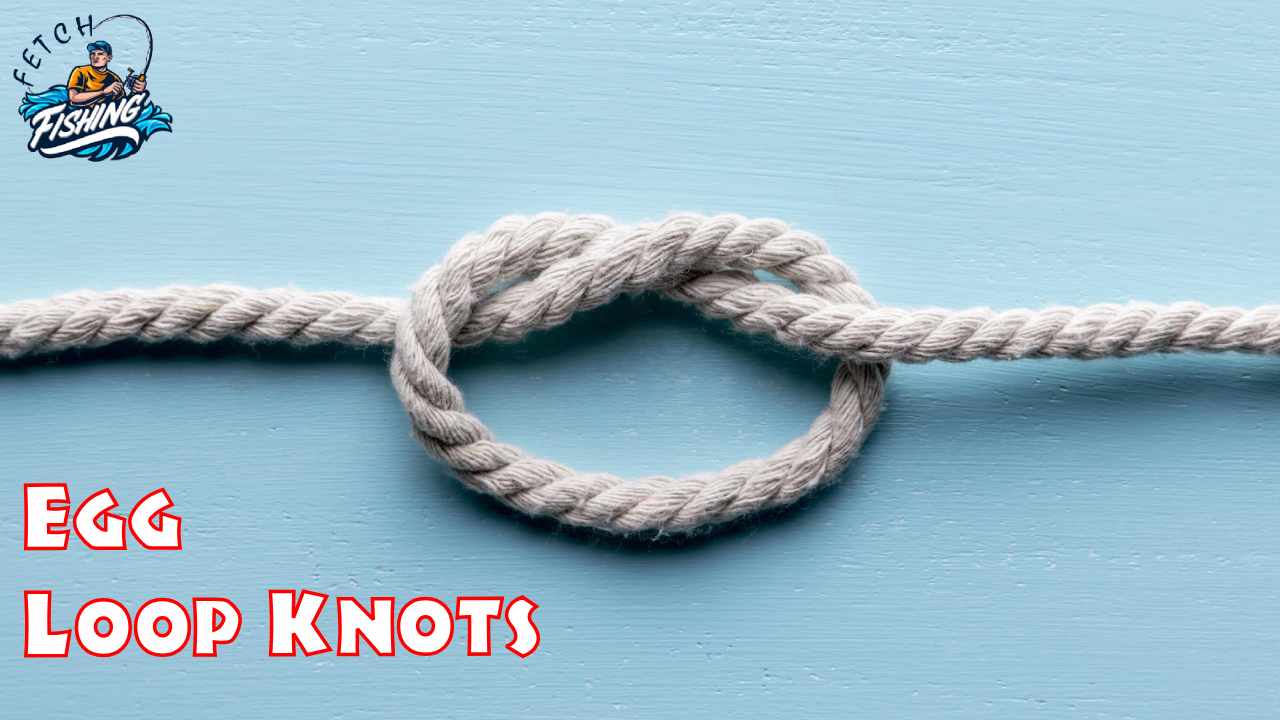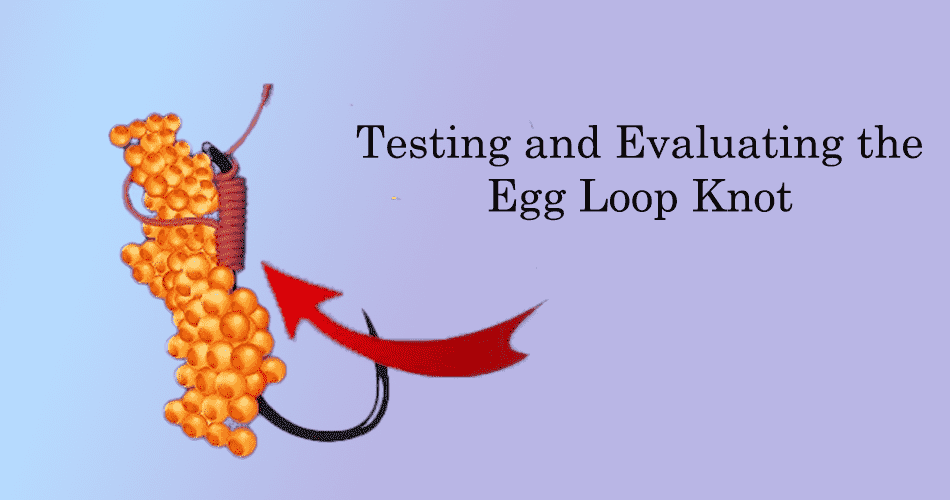
The egg loop knot is a widely used and versatile knot in fishing that allows anglers to securely attach bait or lures to their fishing hooks. This knot is specifically designed to create a loop around the hook, allowing for the effective presentation of bait such as salmon eggs or other soft baits. The egg loop knot has gained popularity among anglers targeting species like salmon, trout, and steelhead, as it offers excellent bait retention and natural presentation in the water.
Learning and mastering the egg loop knot is of great importance for anglers for several reasons. Firstly, the egg loop knot provides a reliable and secure attachment between the bait and the hook. This is crucial as it prevents the bait from easily falling off during casting or when in contact with fish. The knot’s loop design ensures that the bait remains securely positioned, enhancing its attractiveness and increasing the chances of enticing a strike.
Understanding the Egg Loop Knot

A. Explanation of the Egg Loop Knot’s Composition and Structure:
The egg loop knot is a knot specifically designed to create a loop around the fishing hook. It is formed by making a series of wraps with the tag end of the fishing line or leader around the shank of the hook, creating a loop of desired size. The loop is then passed through the eye of the hook, allowing for the secure attachment of bait or lures. The wraps and the loop configuration of the knot provide excellent bait retention, keeping soft baits, such as salmon eggs or other delicate offerings, securely in place during casting and when in contact with fish.
B. Advantages of Using the Egg Loop Knot in Fishing:
Using the egg loop knot in fishing offers several advantages. Firstly, it provides a reliable and secure method of attaching bait or lures to the hook. The loop design of the knot ensures that the bait remains in place, even during aggressive casting or when encountering strong currents. This increases the bait’s longevity and effectiveness, allowing anglers to focus on presenting the bait effectively rather than constantly worrying about it coming off the hook.
C. Situations and Scenarios Where the Egg Loop Knot Is Particularly Useful:
The egg loop knot is particularly useful in situations where a lifelike bait presentation is essential. It excels when fishing with soft baits or baitfish chunks that need to mimic the natural movement of prey in the water. The loop created by the knot allows the bait to move freely, creating a more realistic appearance that can trigger strikes from selective or cautious fish.
Step-By-Step Guide: Tying the Egg Loop Knot
A. Introduction to the Egg Loop Knot-Tying Process:
The egg loop knot is a valuable technique in fishing that allows anglers to securely attach bait or lures to the hook. This step-by-step guide will provide detailed instructions on how to tie the egg loop knot for effective bait presentation.
B. Detailed Instructions on How to Tie the Egg Loop Knot:
- Start by doubling a section of fishing line or leader, creating a loop of the desired size. The loop should be large enough to accommodate the bait or lure you intend to use.
- Hold the loop in one hand and make a series of wraps with the tag end of the line or leader around the standing line. Aim for 4 to 6 wraps, depending on the size of the bait.
- After completing the wraps, pass the tag end through the loop created at the beginning.
- Moisten the knot with saliva or water to lubricate it.
- Hold onto the standing line and tag the end and slowly tighten the knot by pulling in opposite directions. Ensure that the wraps stay tight and secure.
- Once the knot is snug, trim the excess tag end close to the knot using sharp nippers or scissors.
C. Visual Aids or Diagrams to Assist with the Tying Process:
Visual aids or diagrams can be extremely helpful in understanding the egg loop knot-tying process. They provide a clear visual representation of each step, ensuring accuracy and ease in following the instructions. These illustrations typically show the looping and wrapping motions involved in creating the knot, as well as the final appearance of the knot.
D. Common Mistakes to Avoid When Tying the Egg Loop Knot:
To tie a reliable egg loop knot, it’s important to avoid common mistakes that can compromise its effectiveness. Some common mistakes to avoid include:
- Insufficient wraps: Ensure that you make enough wraps around the standing line to create a secure loop. Insufficient wraps may result in a weak knot that could unravel when under tension.
- Incorrect loop size: The loop size should be appropriate for the size of the bait or lure you’re using. A loop that is too large or too small may affect the bait’s movement or compromise its security on the hook.
- Failure to moisten the knot: Lubricating the knot with saliva or water before tightening helps reduce friction, allowing for smoother and tighter knot formation. Neglecting to lubricate the knot may lead to uneven tightening or potential slippage.
Tips and Techniques for Tying the Egg Loop Knot

A. Selecting the Right Fishing Line or Leader for the Egg Loop Knot:
Choosing the appropriate fishing line or leader is crucial for tying a reliable egg loop knot. Opt for a line or leader that matches the target species and fishing conditions. Consider the strength and diameter of the line, as well as its abrasion resistance. Thinner lines may require additional care and precision during knot tying, while heavier lines may create bulkier knots. Selecting the right line ensures the knot’s strength and performance.
B. Choosing the Appropriate Hook Size for the Desired Fishing Application:
The choice of hook size is essential in the egg loop knot technique. Consider the size of the bait or lure being used and match it with the appropriate hook size. Using a hook that is too small may result in poor bait presentation or inadequate hooking efficiency, while a hook that is too large may interfere with the bait’s natural movement. By selecting the right hook size, one can ensure proper alignment between the bait and hook, maximizing the effectiveness of the egg loop knot.
C. Properly Positioning the Bait or Lure Within the Egg Loop:
When tying the egg loop knot, it is essential to position the bait or lure correctly within the loop. Ensure that the bait is centred and securely held by the loop. The proper positioning allows for natural movement and enticing presentation. Pay attention to the bait’s orientation and alignment with the hook to achieve optimal results.
Testing and Evaluating the Egg Loop Knot

A. Importance of Testing the Strength and Performance of the Egg Loop Knot:
Testing the strength and performance of the egg loop knot is crucial for anglers to ensure its reliability during fishing. The knot serves as the connection between the fishing line, leader, and bait, and its strength directly impacts the angler’s ability to land fish successfully. By testing the knot, anglers can have confidence in its performance and determine its suitability for different fishing conditions and target species.
B. Methods for Testing the Egg Loop Knot’s Strength and Durability:
There are several methods for testing the strength and durability of the egg loop knot. One common approach is to conduct a pull test using a scale or a knot-testing machine. This involves applying consistent tension to the knot and measuring the force required to break it. Another method is to simulate real fishing conditions by casting and retrieving with the knot, observing its behavior, and assessing any signs of weakness or slippage.
C. Factors That Can Affect the Knot’s Strength and Performance:
Several factors can influence the strength and performance of the egg loop knot. The type and quality of the fishing line or leader used to play a significant role, as different materials have varying degrees of strength and knot-holding capabilities. The angler’s technique in tying the knot also affects its overall performance. Attention should be given to proper knot tightening, positioning of the loop, and alignment of the bait. Additionally, environmental factors such as water conditions, temperature, and the presence of debris or vegetation can impact the knot’s performance.
Applications and Variations of the Egg Loop Knot

A. Using the Egg Loop Knot for Salmon or Steelhead Fishing:
The egg loop knot is widely utilized in salmon and steelhead fishing due to its effectiveness in presenting bait such as roe or spawn sacs. This knot allows anglers to securely attach the bait while maintaining a natural appearance and enticing movement. The loop created by the knot enables the bait to swing freely, mimicking the motion of natural eggs drifting in the water. Its versatility makes the egg loop knot a go-to choice for anglers targeting these species, as it enhances the presentation and increases the chances of attracting bites.
B. Adapting the Knot for Different Bait or Lure Presentations:
While the egg loop knot is commonly associated with bait fishing, it can also be adapted for various lure presentations. Anglers can use this knot to attach soft plastic baits, such as worms or grubs, to hooks, giving the lure a more real and natural action. By threading the lure through the loop and positioning it properly, anglers can create a secure connection that allows for realistic movement and increased fish-catching potential. This adaptability makes the egg loop knot a valuable technique for both bait and lures anglers.
The Final Note
In conclusion, the egg loop knot is a versatile and valuable technique for anglers seeking to enhance their bait presentation and increase their chances of success on the water. It provides a secure and reliable attachment between the bait or lures and the hook, ensuring the bait remains in place even during aggressive casting or when encountering strong currents. The loop design of the knot allows for natural movement, making it particularly effective when fishing with soft baits or baitfish chunks that need to mimic the motion of prey in the water.



